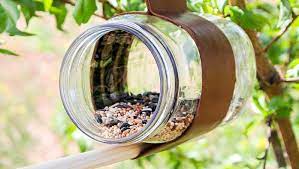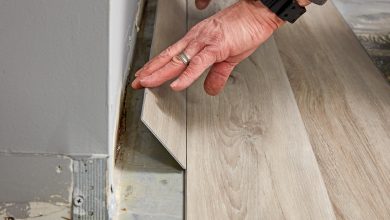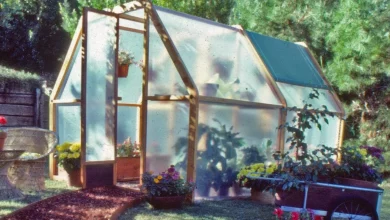DIY Compost Bin Wood
One of the simplest and most straightforward methods for creating a compost bin at home is by using wooden pallets. Wooden pallets are readily available and make for an easy DIY project to house your kitchen and garden scraps. Let’s take a look at how to construct a basic pallet compost bin.
You will need:
- 3-4 wooden pallets
- Hammer or nails
- Wire/rope (optional)
Start by placing three pallets on their sides so they stand upright and form 3 of the walls. Lean the 4th pallet against the other 3 to form the fourth wall and lid. You can tie or wire the lid pallet in place so it doesn’t fall, or simply place cinder blocks or a heavy stone on top to weigh it down.
That’s all there is to the basic construction. Feel free to get creative by adding sliding doors, balconies, or ventilation holes for enhanced functionality and aesthetics. The beauty of wooden pallets is the versatility and low cost of putting together a straightforward system to start composting. As an added bonus, pallets are breathable which allows good airflow through the pile.
DIY Compost Bin Outdoor
For a more permanent outdoor compost bin that can withstand the elements, consider building a three-walled enclosure using cedar fence pickets. Cedar is a naturally rot-resistant wood that will hold up well outside without needing to be treated with chemicals.
You will need:
- 12-16 cedar fence pickets
- Hammer
- Nails or wood screws
- Hinges (optional)
- Latch (optional)
Lay out your pickets side by side and hammer or screw together at the corners to form three walls, leaving one side open for access. Make the walls about waist high for easy turning and mixing of materials. You can also add a single picket as a “roof” or lid that can be latched closed during non-use periods.
Include 1-2 ventilation holes near the bottom of each wall to allow airflow. Consider adding sturdy hinges and a hasp with a latch to keep animals out. Line the inside walls with hardware cloth mesh to prevent burrowing creatures from entering your compost.
DIY Compost Bin Pallets
For those wanting a more substantial long-term composting system using readily available building materials, consider a pallet compost bin. Pallets provide stable wooden walls that can be stacked, connected, and customized to suit your space and needs.
You will need:
- 6-8 wooden pallets
- Drill
- Wood screws
- Metal flashing (optional)
Start by laying three pallets on their sides and screwing them together to form the base. Stack another three pallets on top, offsetting the cracks and screwing them together to form the walls.
Add ventilation holes near the top and bottom by drilling or cutting out squares in the pallets. You can cover larger holes with metal flashing bent over the edges for durability.
A pallet system can be made of any size by adding more units together and stacking multiple levels. Consider including shelving, balconies, or sliding doors/gates for ease of turning, filling, and accessing your finished compost. With a little creativity, a pallet bin allows for plenty of customization options in your outdoor space.
How to Make a Compost Bin from a Plastic Dustbin
For those with limited space, an easy DIY solution is converting a basic plastic dustbin or trash can into a versatile composting vessel. Plastic bins are inexpensive, lightweight, and can be situated nearly anywhere, like a patio, balcony, or backyard.
You will need:
- Plastic trash can or dustbin
- Drill
- Hole saw drill bit
Start by drilling 15-20 holes along both the sides and bottom of your plastic bin, using a hole saw bit that is about 1⁄2 inch in diameter. These aeration holes allow air flow into the pile which is crucial for hot composting breakdown.
You can leave the bin lid intact for containing odors or turning it regularly, or remove entirely for a more open system. Place the bin in a convenient spot and add your browns and greens in layers to start the process.
With its mobility and accessibility, a container composter is perfect for small spaces or testing composting before dedicating it to a larger permanent system. Regular turning and aeration are key to success with this method.
FAQs
What is the easiest way to compost?
The simplest way to compost is with a basic pile or container system with little maintenance. To “lazy compost”, simply pile greens and browns together in a heap without turning or tuning. Over 6-12 months the materials will slowly break down into nutrient-rich soil. For faster results, turn the pile weekly with a shovel or pitchfork to introduce oxygen which speeds the microbial breakdown.
How do you make a homemade compost bin?
There are various easy DIY options for constructing a basic compost bin at home. Pallets, wooden boards, wire fencing, and even repurposed trash bins can all be assembled into functional systems. The key elements are the containment of the materials, aeration holes for airflow, and a way to access the pile for turning/mixing materials. Keep designs simple using low-cost or recycled materials.
What can onions go in compost?
Yes, onions and their skins can be composted. Onions are a green, carbon-rich material that will break down to feed your compost pile. It’s best to chop or crush onions into smaller pieces before adding. Some people report their piles smelling like onions initially, but the scent doesn’t last. As long as your carbon-nitrogen ratio is balanced, onions are a great addition providing nutrients to your future soil.
Can I compost in a plastic bin?
It is definitely possible to compost directly in reusable plastic bins, but there are a few things to keep in mind. Plastic won’t allow for as much airflow as other porous options like wood. You’ll need to turn the materials more frequently, possibly every 1-2 days, to get oxygen circulating. It also may take longer to fully break down. As long as you drill aeration holes and keep the materials moist, many find plastic containers a convenient option for space-restricted composting.
Does a compost bin need air holes?
Yes, compost bins require air holes to effectively breakdown organic materials through aerobic decomposition. Air holes allow oxygen to enter the pile to support the microorganisms breaking material down. Without air, the pile can become anaerobic (without oxygen) and smelly as it fails to heat up. As a general rule, compost bins should contain around 15-20 air holes, each approximately 1/4-1/2 inch in diameter, spaced along the sides and bottom.



